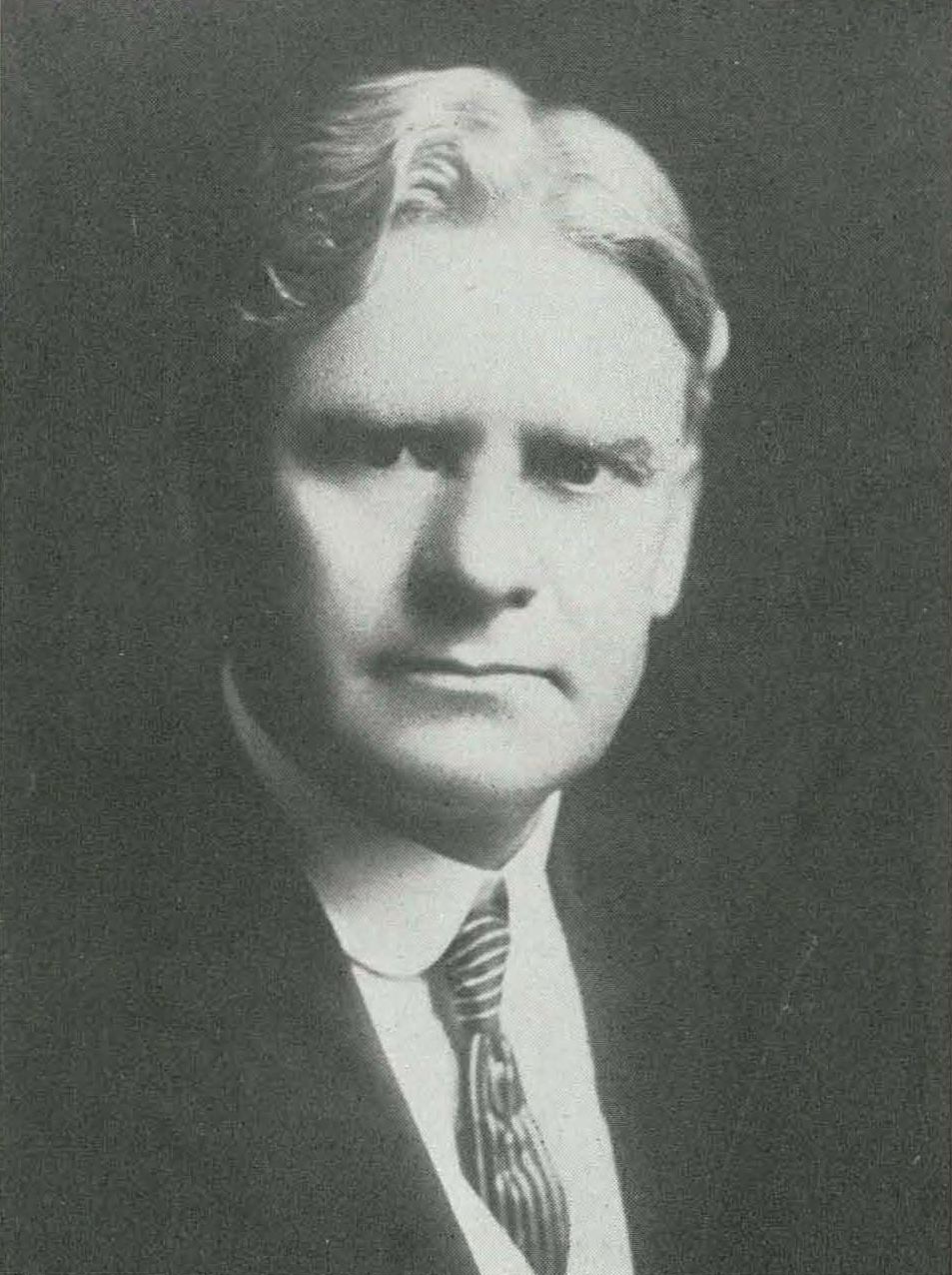George Dallas Smith
"A Magnificant Man, A Prince Among Men"
1870-1920
Life of G. Dallas Smith - Boles
Last GA Report
At Home And Abroad - Initial Report Of Death
The Death Of A Busy Preacher - A.B. Lipscomb
Sketch Of G. Dallas Smith - Colley
Mecellany - Long
A Magnificent Man - G. Dallas Smith
At Home And Abroad - F.W. Smith Report
Obituary of Katherine L. Smith
Finding The Grave Of G. Dallas Smith
Directions To The Grave Of G. Dallas Smith
Photos Of Smith-Wadzeck Graves
1870 - G. DALLAS SMITH - 1920
Our pioneer preachers preached the gospel and established churches all over this country of ours. This work was done at a great sacrifice and with little earthly renown or reward. We rise up now and give to them a belated and much-retarded praise for the services which they rendered in the name of Christ. After the cause was established, it took valiant men, men of God, to carry on the work. Many of these suffered and sacrificed as did the pioneer preachers. Later came another generation of preachers who had a zeal for God and his truth that knew no bounds. Among this number may be listed G. Dallas Smith.
Brother Smith was born in Obion County, Tennessee, near Union City, March 17, 1870. He was the second son of G. W. Smith and Lucy C. Smith, and one of a family of ten children. He was reared on the farm, and received such training in the public schools as was given at that time. He learned well the valuable lessons of life, which are industry, frugality, honesty, and truthfulness. These fundamental traits of character were deeply imbedded in the very nature of G. Dallas Smith. No man had a higher regard for these virtues than did he, and no man impressed his fellows more with these qualities than did he. Brother Smith, after attending the public schools in his county, was encouraged to go further and attain higher accomplishments in culture and education. He became a student in Dickson Normal College, Dickson, Tenn., and attended, part time, this institution of learning for three years. Next he became a student in Georgie Robertson Christian College, Henderson, Tenn. He was well educated in the common branches of learning and well grounded in the fundamentals of an education. Thoroughness was a very prominent quality of Brother Smith. He believed in doing well what he did.
At the age of twenty-four he was baptized into Christ by the lamented John R. Williams, of Hornbeak, Tenn. He had been taught by a Christian father and a saintly mother, but it seems that other things engaged his attention after he grew up until thus late in life. When he became a Christian, he entered upon the duties of a Christian life, as he did all other undertakings, with earnestness and thoroughness. About two years after he was baptized, or in 1896, he began to preach the gospel. He was a successful preacher from the beginning. He did general evangelistic work in nearly all of the Southern States. He was a successful evangelist, and through his teachings and exhortations many were brought into the church. No community where he labored could say that it was not made better by his teaching labors. He received many more calls for meetings than he could fill. His evangelistic labors were in such demand that he booked his meetings two and three years ahead.
Successful as an evangelist was he, yet probably more successful in doing local church work. He labored with the following churches: Weatherford, Texas; Bardwell, Ky.; Fayetteville, Tenn.; Murfreesboro, Tenn.; and Cleburne, Texas. These were all strong congregations, and they were made stronger by the labors of G. Dallas Smith. While doing station work with these churches he had time to do some evangelistic work. He established a number of congregations in Tennessee, Kentucky, and Texas. Brother Smith taught school for a number of years before he became a preacher, and he was a successful teacher. Perhaps his strongest point as a preacher was his teaching ability. He held the Bible up to the people as the word of God, and had ability to bring it to the fore in such a way as to impress Bible study upon the members of the church.
Brother Smith was the author of two books—"Outlines of Bible Study" and "Lectures on the Bible." He was also the author of a number of pamphlets. The great emphasis of his life as a preacher was placed upon teaching the Bible. His "Outlines of Bible Study" was made the guide in many prayer meetings and other times for Bible study. Many congregations took his book and studied the Bible through with it as a guide. His "Lectures on the Bible" gave great emphasis to the study of the Bible. Brother Smith's teaching was not so much the ornate style, but plain, simple, practical teaching of the Bible. Brother Smith was a scholar, yet he knew how to teach the common people, and they heard him gladly. In writing the "Preface" to one of his books, he said: "They have not been prepared for the benefit of scholars, but for the good of learners. They are intended for the masses, and not for the favorite classes."
Brother Smith was a friendly man. He was frequently called "a magnificent man." He was a congenial associate and very pleasant in conversation. He drew men to him by his friendliness and courtesy. He mixed with all classes with ease and grace. He could dine at the table of the poor and make them glad that he was in their company; he could associate with the wealthy and cultured with ease and grace, as though he were "to the manner born." He was cheerful and obliging to all. He was like his Master in going about and doing good. Wherever he went, he did good and blessed people. The congregations where he labored loved him, and he loved them.
Brother Smith lived a clean life and set an example of Christian piety to all who observed him. He seemed to be ever conscious of Paul's admonitions to Timothy: "Guard thy life;" "Keep thyself pure." He never became entangled in the political affairs of this life. He was too busy in the kingdom of the Lord to give any time to the political affairs of life. However, he was not ignorant of the current history of the country and the affairs which affect our civilization today. Brother Smith avoided wrangling and unpleasantness with his brethren. He loved peace in his life and in his teachings.
His life was suddenly cut short. He had gone to Cleburne, Texas, to work with the church there in 1917. He first visited the Central Church of Christ there and held a series of meetings in the fall of 1917. The church then asked him to locate and labor with the church there. He agreed to do this, and he had been with the church nearly three years when he was suddenly taken away. He was taken sick on Saturday night with a paroxysm of the heart and died at 11:15 A. M., Sunday, November 7, 1920. He was buried in the cemetery there. Perhaps no man was loved more by the church at Cleburne than was G. Dallas Smith. The cause of Christ lost a valiant soldier and the people of God lost a noble brother in the passing of Brother Smith.
-Biographical Sketches Of Gospel Preachers, H. Leo Boles, c.1932, Gospel Advocate Company
(Back To Top)
Last Gospel Advocate Report On The Work Of G. Dallas Smith Before His Untimely Death
Tennessee—Fayetteville, September 13. —The meeting at Philadelphia, in Maury County, resulted in six baptisms. Brother G. Dallas Smith closed here last. night with thirteen baptisms begin tonight at Wells Hill, and on next Monday (September 20) at Harms—J. M. Gainer.
-Gospel Advocate, September 23, 1920
(Back To Top)
At Home And Abroad
On November 8 we received from L. Meyer, of Atlanta, Ga., the following telegram: "If G. Dallas Smith will be buried in Tennessee, wire when and where at my expense." This was the first intimation we had received that G. Dallas Smith was dead. Later L. F. Mason and wife passed through Nashville on their way to Morrison, Tenn., to bury their baby, which was only six weeks old. Brother Mason informed us that Brother Smith had died suddenly in Cleburne, Texas. The intention was first to bring his body to Tennessee for burial, but it was afterwards decided to bury him in Texas. The Gospel Advocate deeply deplores his loss. He was an able preacher and was doing a good work for the Master. His "Outlines of Bible Study" has been used extensively by the churches with great profit. We shall expect some one to prepare a more extended notice of his life and death for our columns.
-At Home And Abroad, November 8, 1920, page 1125
(Back To Top)
The Death Of A Busy Preacher.
I write these lines in memory of Brother G. Dallas Smith without having read any of the details concerning his death further than a brief news special from Fort Worth to the effect that he had died suddenly on Monday, November 8, at Cleburne, Texas, where he had lived since the family moved from Tennessee. The details do not matter so far as this notice is concerned. It is sorrow enough to know that he is dead. As I estimate this loss, the church of Jesus Christ on earth has yielded up to God one of its most energetic workers, and that, too, at a time when we stood greatly in need of his services. I shall always remember our beloved brother in connection with his zeal for pushing the Bible to the fore and giving to Bible study the place of supreme importance. I think I am correct in stating that he was the author of only two volumes, the one being "Outlines of Bible Study" and the other his "Lectures on the Bible;" but had he lived a thousand years, he could not have hit upon more useful themes. He did his literary work in a painstaking way, and popular appreciation is attested by the fact that hundreds of copies are now in circulation. Brother Smith himself states in one of the prefaces: "They have not been prepared for the benefit of scholars, but for the good of learners. They are intended for the masses, and not for the favored classes." It has been my observation that those who have striven to help the common people have done the most good in the world, and what they have written along this line survives long after more pretentious and scholarly volumes have passed into oblivion. Martin Luther's "Catechism" and “Table Talk" are preeminent examples. Jesus prayed: “I thank thee, O Father, Lord of heaven and earth, because thou hast hid these things from the wise and prudent and hast revealed them unto babes. Even so, Father: for so it seemeth good in thy sight." No man can teach the Bible so devotedly and encourage others to teach it so seriously as did Brother Smith and be soon forgotten. It is such a mighty Book and filled with such immortal themes that for a man to lay hold upon those treasures means that, whether consciously or unconsciously, he will immortalize his own devotion on account of the things he has handled.
Another pronounced element that I discovered in our brother's life was his friendliness; and this he manifested, so far as I have noted, to every man alike. Even in a heated argument, where the average man so easily loses his temper, this brother never forgot the fine art of Christian courtesy mixed with kindness and brotherly love. Furthermore, he was cheerful and obliging and ever zealous for the preaching of the gospel. In selecting writers for the special numbers of the Gospel Advocate, I called on Brother Smith many times. I always felt that he would send something good, and send it promptly. He never failed in a single instance. During the only visit I ever paid to his home I was deeply impressed with the fact that he was kind and good to his wife and children and that they loved him with rare devotion. In words of exquisite tenderness one of his volumes is dedicated "to my precious wife and children," and “to my dear old father, now on the brink of the river, who, with my devoted mother, already passed over, taught me in youth the lessons of faith, hope, and love," and "to my four brothers and sisters whose love has remained constant throughout the years." As a humble fellow worker in the Master's service, who knows how to appreciate his many virtues and to bury every thought of any imperfection, I ask the privilege of joining with hundreds of others from Fayetteville, Murfreesboro, Cleburne, and all other points to which his usefulness has extended, in laying a wreath of sweet forget-me-nots upon his grave. It is true that he died in the very prime of life. But we comfort our hearts with the precious thought that he made every year count for something worth while. I cannot conceive of the grim specter of a wasted life standing near when he passed away. It must have been the angel whom God in his inscrutable wisdom has sent ever and anon to lift his busiest workers to higher ground.
“Man's wisdom is to seek
His strength in God alone;
And even an angel would be weak
Who trusted in his own."
-Gospel Advocate, A.B. Lipscomb, November 18, 1920, page 1120
(Back To Top)
Sketch of G. Dallas Smith.
On November 7, 1920, G. Dallas Smith breathed his last and passed away. He was born in Obion County, Tenn., in March, 1870, being a little more than fifty years old at the time of his death. He was a very useful man, active in the Lord's work almost to the last. He was taken suddenly ill on Saturday night and passed away on Sunday, at 11:15 A. M. He was a systematic writer and a forcible speaker, having the gift to say what he cared to say on any subject in a very clear way. He was always firm and very positive, but respectful to those who differed from him. He lived a consistent life, and was respected by his neighbors and loved by the church. Dr. E. V. Wood, now of Dallas, Texas, and the writer had charge of the funeral services. We were assisted by all the preaching brethren that were there.
Brother Smith has labored in a number of States, but his principal labors were in Tennessee, Kentucky, Arkansas, and Texas. He was preaching for the church at Cleburne, Texas, when he died. His father was a gospel preacher, and he has two brothers who are able preachers— R. D. Smith, who is preaching for the church at Denton, Texas, and John T. Smith, who is now preaching for the church at Lubbock, Texas.
Brother Smith leaves a wife and four children. They range in age from three to sixteen years. I pray that the Lord in his own good way may abundantly bless Sister Smith and these children in their sorrow.
-A.O. Colley, Gospel Advocate, November 25, 1920, page 1141
(Back To Top)
Mecellany
George H. Long, of Weatherford, Texas, sends for publication in the Gospel Advocate the resolutions adopted by the Christian Chapel congregation, of that city, on the death of G. Dallas Smith. He writes: "At the close of the morning services on Sunday, November 14, Tom Walker announced the death of G. Dallas Smith, after which there were a few short talks on the life and work of Brother Smith, and suitable resolutions were adopted." The resolutions are here given:
"Whereas it has pleased our Heavenly Father to call from the walks of men our dearly beloved brother and fellow laborer, G. Dallas Smith, on November 7, 1920; and
"Whereas in the death of Brother Smith the church of Christ has lost one of its most faithful and efficient evangelists; and
"Whereas we had learned to love Brother Smith because of our associations with him in the past, he having been at one time located in our midst and having labored with us for several years; and
"Whereas, while our hearts are filled with sorrow because of the death of Brother Smith, yet we know that he fought a good fight, he has finished his course, he has kept the faith, and henceforth there is laid up for him a crown of righteousness, which the Lord, the righteous judge, shall give him at that day: therefore,
“Be it resolved, that the Christian Chapel congregation of the church of Christ at Weatherford, Texas, do hereby extend to Sister G. Dallas Smith and children our heartfelt sympathy. In the loss of their dear husband and father, and we pray God's blessings to rest upon them in their bereavement; and may they say, as did that prophet of old: "The Lord gave, and the Lord hath taken away; blessed be the name of the Lord."
-Miscellany, Gospel Advocate, Dec. 9, 1920, page 1199
(Back To Top)
"A Magnificent Man "—G. Dallas Smith.
While on a short visit in Texas lately, through the kindness of Brother Smith, the Cleburne church gave me an invitation to visit them, which I accepted. I spoke to them on the evening of October 29. The singing was fine, the audience attentive, and every courtesy was shown me. I was deeply impressed with the joy, peace, and good will that prevailed and the excellent work they were doing, Brother Smith and his noble wife entertained me in their home, and I never had a more pleasant visit. He and his little children accompanied me to the train the next morning, and as we were to part he took my hand with a warm grasp and spoke words of encouragement, as a true brother in Christ he could always do. As the train sped away I said: “He is a magnificent man, a prince among men."
It has been my pleasure to know Brother G. Dallas Smith since we were boys. He was often in my father's home, and we were in school together. A few years ago he delivered a series of sermons in Memphis, and made his home with me. I have never known a purer and truer man.
As a teacher of the sacred word, he was among the best; as a preacher of the gospel, he impressed his hearers with a deep reverence for the Book of books and the superiority of the religion of Christ.
Little did I dream when we said good-by that it was the last time, and that an open grave was only nine days away for one of us.
Three lessons I desire to draw from this life for all, and especially my preaching brethren:
1. Brother Smith's life was, and is now, felt for good, not only because he was a preacher of marked ability, but more because he was a clean, pure man. Let us so live that the world about us may have no room to question our daily walk. In the language of Paul to Timothy: “Guard thy life;" “Let no man despise thy youth;" "Keep thyself pure," “unspotted from the world."
2. Brother Smith filled his place so full that the world said, “Come up higher." Do your work so well that you will never have to seek a place, but the place will seek you.
3. Being called in the prime of life naturally raises the question, "Who will be next?" What preacher of our ranks will follow? Will it be you? Will it be me? “Be ye also ready." He was ready, and there was nothing to fix up. Bitter discussions and hard feelings often arise between brethren and are often carried too far in the papers, and much unpleasantness follows. May that cease, and may we pull together, encouraging and helping one another. Then when the summons comes, if it be in the noon of life, we will be ready to go in peace with God and man.
What a comfort to all who loved Brother Smith, especially to his wife and children, that he leaves such a beautiful record! I would epitomize his life in these words: “To live was Christ; to die was again."
-W. S. Long, Gospel Advocate, Dec. 16, 1920, p.1241
(Back To Top)
At Home And Abroad
F. W. Smith expresses deep regret over the death of G. Dallas Smith, and says that in him a very efficient, able, and consecrated worker has been lost. The writer of this joins Brother Smith in this sentiment.
-Gospel Advocate, At Home And Abroad, November, 25, 1920, page 1148
![]()
A Letter Of Thanks To Gospel Advocate Readers
From Mrs. G. Dallas Smith and children Bleburne, Texas, December 31: "We wish to extend sincerest thanks to the many friends for the many letters and telegrams, and for their words also, of comfrot and sonsolation, extended to us in the hour of our yet greatest sorrow. It woudl be almost impossible to make personal reply to all of these messages, and we therefore ask that this be accepted as sufficient to assure them of our deepest thanks."
-Gospel Advocate, January 13, 1921, page 45
Obituary On Katherine L. Smith
Smith, Mrs. G. Dallas
Funeral was held at 4 P.M. July 26, in the Johnson Street church of Christ in San Angelo for Mrs. G. Dallas Smith, 82. She was the mother of Lawrence L. Smith, business manager of Abilene Christian College.
Officiating were Stanley Lockhart, and Paul Southern. Burial was in Lawnhaven Memorial Gardens.
Mrs. Smith died at noon Sunday in Shannon Hospital in San Angelo. At the time of her death, she was living with Mrs. G. B. Wadzeck, her daughter, in San Angelo.
She previously resided with her son, Lawrence Smith, in Abilene many years. She was the widow of G. Dallas Smith who was a well known evangelist and author. His work was chiefly in Kentucky, Tennessee and Texas. He died November 9, 1920 in Cleburne.
Mrs. Smith was born in Fulton, Kentucky, February 20, 1883 and married G. Dallas Smith there June 1, 1902. She was a member of the Johnson Street church of Christ.
Surviving are a son, Lawrence of Abilene; three daughters, Mrs. C. W. Davis of Arlington, Mrs. C. N. Kornegay of El Paso, Mrs. Wadzeck of San Angelo; a brother, Bridges Lawrence of Fulton, Kentucky; a sister, Mrs. Sara McAlister of Nashville, Tennessee; eleven grandchildren and two great-grandchildren.
-Gospel Advocate, August 19, 1965, page 543.
(Back To Top)
Finding The Grave of G. Dallas Smith
Efforts have been made for a few years now to find burial site of G. Dallas Smith. Based on the above article in Boles' book in 1932, I was under the assumption that brother Smith was buried in Cleburne, Texas. It was discovered that J.D. Tant was also buried in the same cemetery as that of G. Dallas Smith. When visiting the cemetery in 2006, instructions were given to locations of both graves. Tant's grave was very close to the front of the office, while Smith's plot was back toward the rear of the cemetery. While seeking to locate Smith's grave, I walked all over the area, but could not find the plot anywhere. After about thirty minutes, I noticed that the caretaker of the cemetery was walking toward me. When he came up he said, "Are you having any luck with finding Mr. Smith's plot?" He went on to say that the family had moved his body to San Angelo in 1965. As San Angelo was over 200 miles away, I had to determine that visiting the grave meant another trip to Texas. Since they did not know what cemetery he was interred in, it became a bit of a process to find where his body was moved to.
In late 2009, I was planning a trip to Texas the following January. I began contacting cemeteries in San Angelo, but still could not find the grave. I called the cemetery in Cleburne, and they suggested I contact the oldest funeral home in Cleburne. I finally got in touch with a person who worked for the funeral home, who was also somewhat of a local church historian and preacher, by the name of B. B. James. I had heard of B. B., but had never spoken with him. When we talked, he well remembered the story of Smith's influence in the area. He was not aware of where and when the body was removed to San Angelo. He researched it, and still was unable to locate information. He did suggest I contact some of the older men who served with his son Lawrence at Abilene Christian University. After several phone calls, I finally got in touch with the widow of G. Dallas' son Lawrence, who, as of this writing, still lives in the Abilene area. Mrs. Lula Smith told me a little about how that after G. Dallas died, Katherine, his widow, moved to San Angelo to be near her daughter, Dallas Katherine Wadzeck. Within a few years it was determined that they needed to move the body from Cleburne to San Angelo. Lawrence, being the oldest, handled the removal of the body. In a phone conversation with Garald Wadzeck, maternal grandson of G. Dallas Smith, it was said that his uncle had told him that the remains that were moved hardly filled a small box; forty-five years in the Texas soil had taken its toll.
Mr. Wadzeck spoke a little about the events that surrounded his grandfather's moving to Texas. According to family history, when G. Dallas Smith was summoned to take the pulpit position in Cleburne, he had been preaching for the largest congregation of churches of Christ east of the Mississippi River, the East Main church of Christ in Murfreesboro, Tennessee. At the time he had been invited to preach a meeting for the largest church west of the Mississippi, the Central church in Cleburne, Texas. In 1917, he was invited to move to Texas and preach for the church, and was there the last three years of his life.
Concerning the events surrounding his death, the fifty year old gospel preacher has been reported as having had a heart-attack while preaching one Sunday evening. However, such was not the case. According to the family, his busy life-style led him to enjoy fellowship in the homes of many Christians, and as a result, his weight was always a concern. With little time for exercize, he had purchased what might now be called an old-fashioned sweat box to help him lose some excess weight. The morning of the day he became very ill, he had spent a great deal of time in the sweatbox. That evening he suffered a heart attack. He slipped away to be with the Lord while his brethren met at the morning worship service, November 7, 1920.
After a few years of searching, I was pleased to finally visit the final resting place of G. Dallas Smith. It was a cold January morning, and the sun was rising as I stood at his grave. Be sure to see the photos below. Many thanks to all of those who have helped me with securing information for the production of this webpage.
-Scott Harp, web-editor
(Back To Top)
Directions To The Grave Of G. Dallas Smith
G. Dallas Smith is buried in the Lawnhaven Memorial Gardens south of San Angelo, Texas. The cemetery is locate a couple of miles south of town on FM Highway 1223. Enter the cemetery on your right. Take the first left. Begin looking for the cornerstone "Apostles"
Lawnhaven Memorial Gardens
4989 FM Highway 1223, San Angelo, Tom Green County, Texas - 325-944-5000
Section G, Garden of Apostles, Lot 227 B. Space #2.
31° 24. 469’ x 100° 23. 622’ Faces NE, - Acc. 17'
Or, D.d 31.40781666666667, -100.3937
View Larger Map
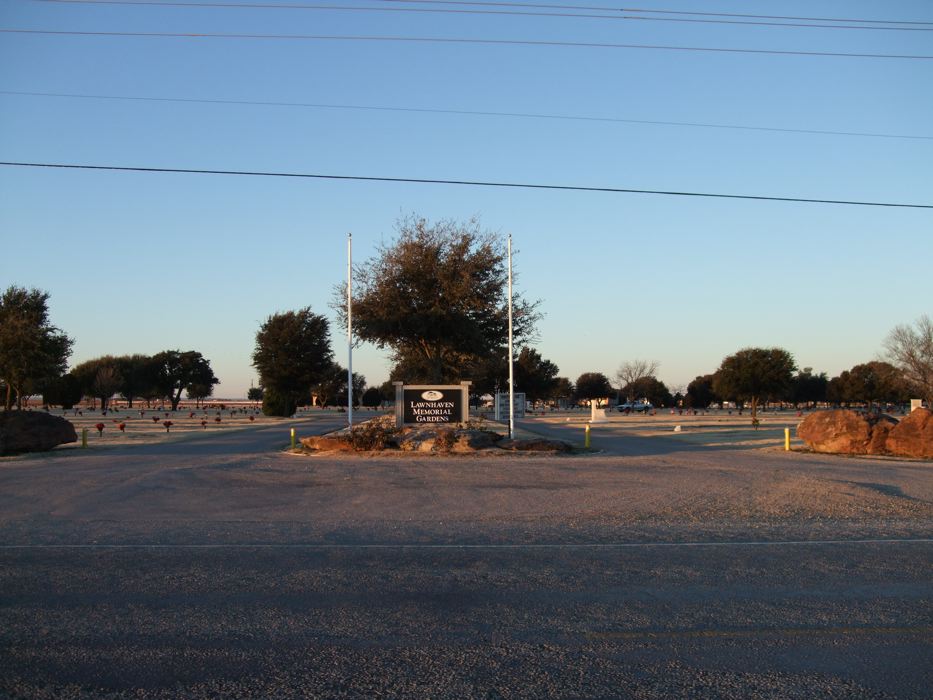
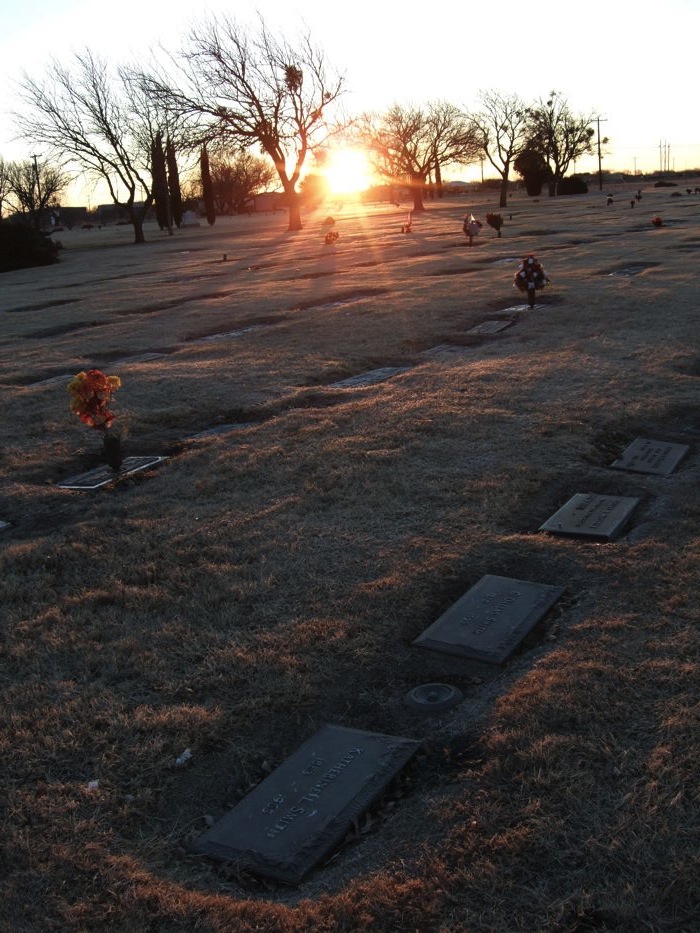
Sunrise At The Grave of G. Dallas Smith
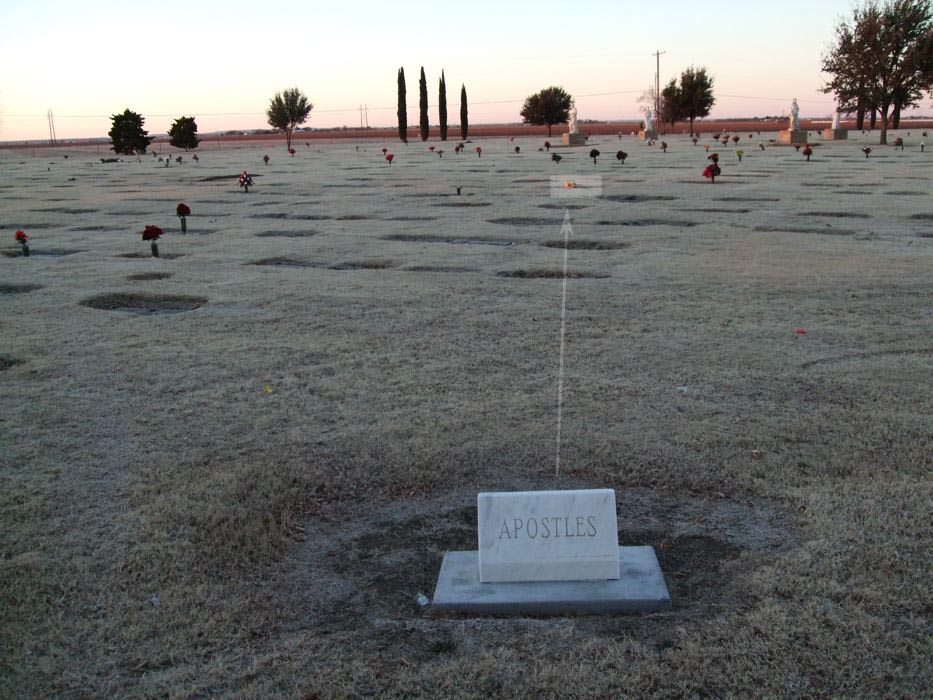
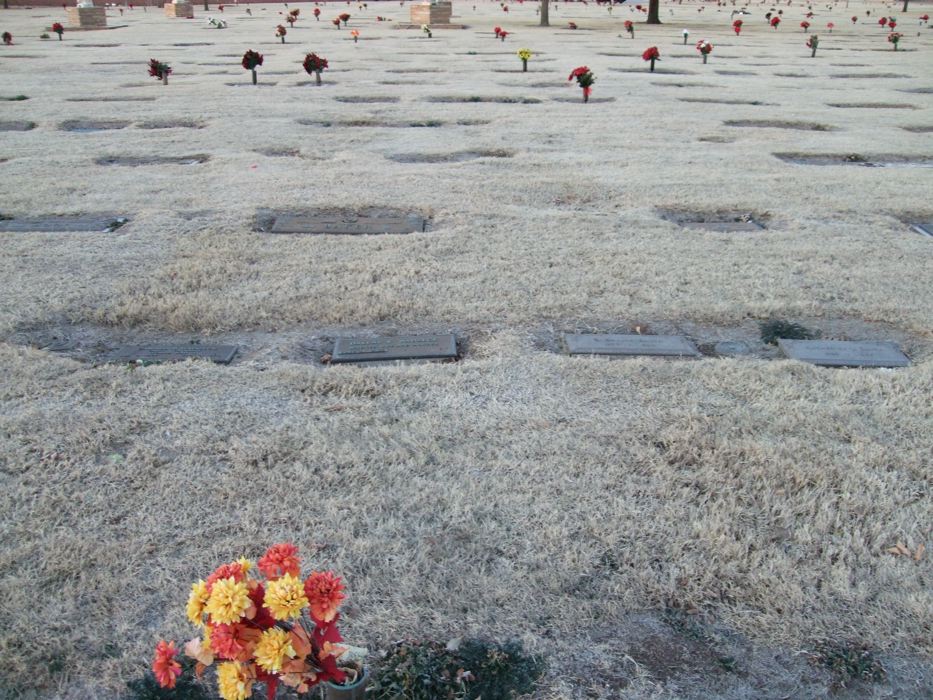
The Graves Of The Smiths & Wadzecks
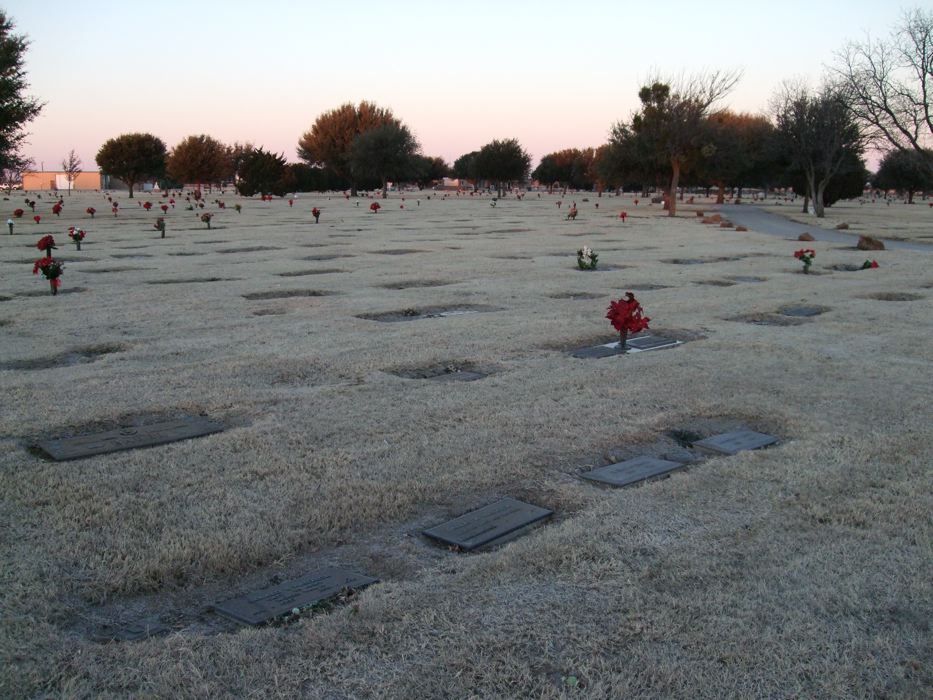
Smith-Wadzeck Graves In Foreground
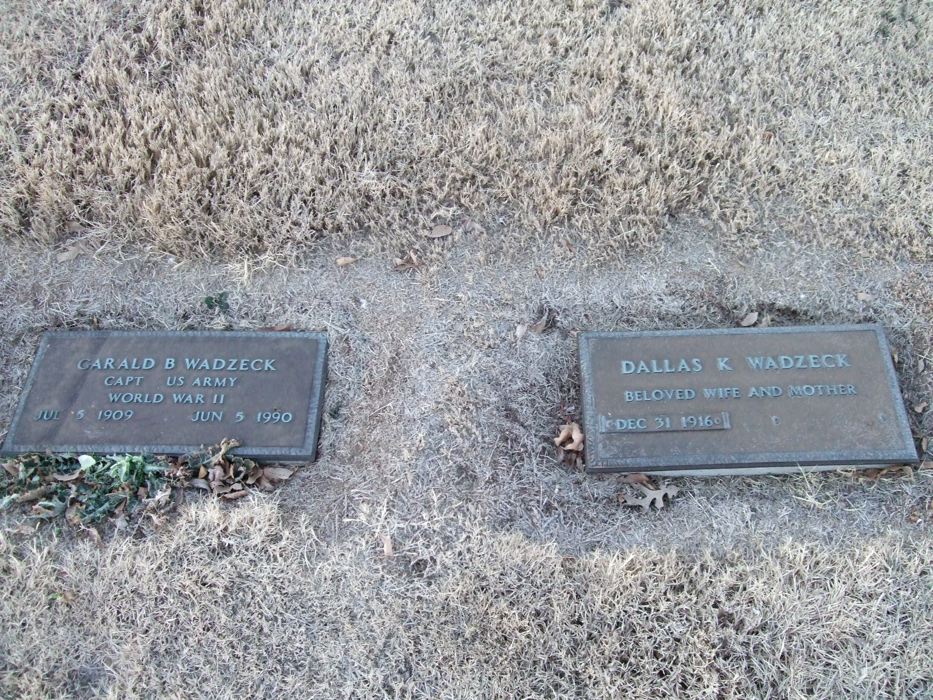
Garald B. Wadzeck - Capt. US Army World War II
Jul 5, 1909 - Jun 5 1990
Dallas Katherine Wadzeck (daughter of G. Dallas & Katherine Smith)
Beloved Wife And Mother
Dec. 31, 1916 - ????
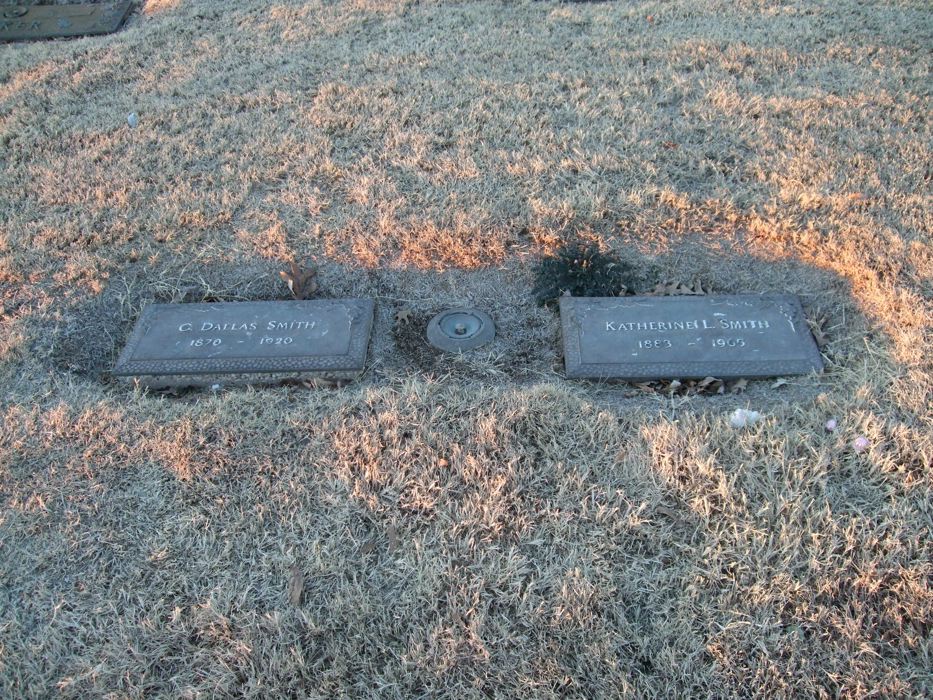
G. Dallas Smith - 1870-1920
Katherine L. Smith -1883-1965
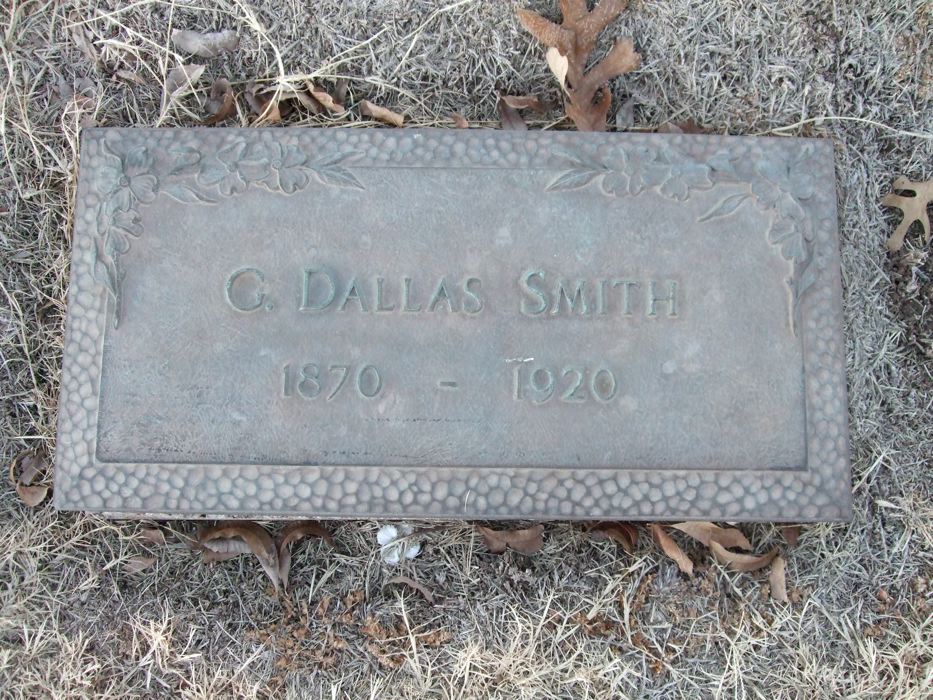
![]()
